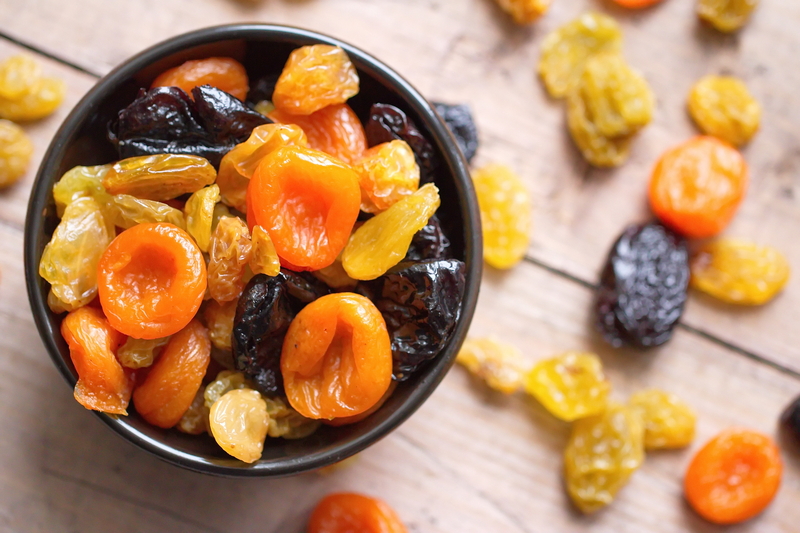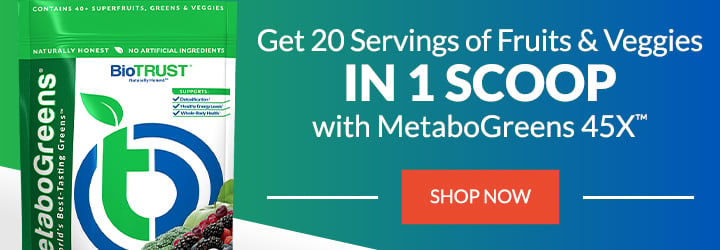Is Dried Fruit Good or Bad for You? See the Facts

When it comes to nutrition, there’s a lot of conflicting information. On one hand, you might hear that carbs provide energy and brain power; on the other end of the spectrum, carbs cause weight gain. Then there’s the thought that “fat makes you fat”; on the other hand, you may have heard that healthy fats help you stay lean.
With fruit, you may have heard that it is good for you—unless it’s certain fruits high in fructose. Then there’s dried fruit, which, not surprisingly, can be found on both the naughty and nice lists, depending on your source of information and even the type of fruit.
It’s enough to make you want to pull your hair out in frustration trying to figure it all out! So, once and for all, is dried fruit good for you?
In other words, is, as some claim, dried fruit no better than candy? Or, is it a healthy, nutrient-dense way to satisfy your sweet tooth?
What is Considered Dried Fruits?
Before we weigh in on the question of whether dried fruit is good for you or not, let’s first establish some groundwork: What is dried fruit? You’ve likely been eating dried fruits since you could first chew. One favorite snack for many children is raisins. Along those lines, dried fruit is just fruit that has had the water content removed (i.e., dehydrated), which leaves behind a smaller, denser, sweeter treat behind.
For example, raisins are dehydrated grapes. Prunes are dried plums. You can also find dried apricots, cranberries, mangos, pineapple, bananas, apples, and more, including dates and figs, which tend to be served dried more often than fresh.
What are the Benefits of Dried Fruits?
One of the biggest benefits of dried fruits is that they have a longer shelf life. They’re easy to pack and take with you, with no need for refrigeration or protection from getting squished. (Unlike fresh bananas, peaches, or pears, which don’t travel well.) You can take them hiking, on road trips, and when flying across the country. Or, you can leave them in your desk at work for a quick pick-me-up snack or to help you resist the temptation of running to the vending machine for a candy bar or chips.
As mentioned, dried fruits are also nutrient-dense. Dehydrating fruit generally only removes its water, not its nutrients, which end up just being packed into a smaller package. So, for example, when compared by weight, dried fruit can provide up to 3.5 times more fiber, vitamins, minerals, polyphenols, carotenoids, and other antioxidants than their fresh counterparts. 1 – 3 The exception, however, is in water-soluble vitamins like vitamin C. In that case, dried fruit provides less.
Some observational studies have even indicated that folks who eat more dried fruit tend to weigh less, have less body fat, and have a higher quality diet than those who don’t. 4 However, this may be because people who eat dried fruit tend to have healthier lifestyles in general.
Health Benefits of Raisins
Because raisins are one of the most common dried fruits, there’s relatively more research on them and their potential benefits than other dehydrated fruits. Eating raisins has been shown to:
- Lower blood pressure 5
- Improve blood sugar/insulin control 6
- Help promote healthy blood cholesterol
- Increase satiety and decrease food consumption over an eight-hour period 5
- Help reduce the risk of diabetes and cardiovascular disease 5
RELATED: How to Get Keto Results WITHOUT the Keto Diet
That said, many of these benefits were when comparing raisins to processed food snacks, 7,8 rather than fresh fruits (i.e., when raisins replace other snack foods). In other words, certain health benefits may be a result of addition by subtraction. Still, raisins are loaded with fiber and phytochemicals, including polyphenols (such as the powerful antioxidants quercetin and kaempferol), and can be part of a healthy diet and lifestyle. 9 (I am sorry to say, though, that raisins don’t appear to contain any of the well-known anti-aging compound resveratrol, which is plentiful in grapes.)
Health Benefits of Prunes
Prunes also have been studied for their unique benefits. If you haven’t heard or experienced it yet for yourself, yes, prunes have been shown to help you “go” (i.e., a natural laxative), which may be due to their content of fiber, sorbitol (a sugar alcohol), polyphenols, or a combination of things. Regardless of the “why,” prunes are considered an effective way to naturally ease constipation. 10
They’re also high in nutrition—with vitamins A and K as well as minerals like potassium and boron—along with a healthy dose of antioxidants and fiber, as mentioned. This functional food may help:
- Promote regularity
- Improve blood sugar/insulin control
- Keep you feeling full
- Support heart health
- Promote bone health 11
Health Benefits of Dates
Dates are often used in healthy recipes as an alternative to sugar. They’re super sweet, but unlike the sugar (and the empty calories) they replace, they are also nutrient-rich, as they provide fiber, potassium, iron, and loads of antioxidants. 12 Plus, they don’t cause a big swing in blood sugar levels that can lead to the spike and crash in energy levels. 13
Downsides of Dried Fruit
Now, let’s address the elephant in the room. Yes, dried fruit is nutrient-dense, but it’s also calorie-dense. And the lion’s share of those calories come in the form of sugars. Natural sugars, yes, but sugars nonetheless. For example, here’s the sugar content of some of the most common dried fruits (by weight):
- Dates: 66%
- Raisins: 59%
- Prunes: 38%
And because water is no longer part of the equation, a serving size of dried fruit is significantly smaller than a serving size of the fresh variety. A serving size of raisins, for example, is a mere ounce, and that provides 85 calories and 22 grams (g) of carbohydrates, 17 of which come in the form of sugars. Yet it tastes so yummy that it’s easy to go way over that paltry one-ounce serving. Another good example: a cup of fresh cranberries provides 4 grams of sugar. A cup of dried cranberries, on the other hand, can pack upwards of 100 grams!
Unfortunately, many dried fruits are made even more “tempting” by sugar-coating them or adding a sweet syrup. Candying fruits (i.e., coating them in sugar) arguably negates many of the potential health benefits and can even lead to harmful effects, such as increasing the risk of obesity and heart disease. So, whenever purchasing dried fruits (rather than just dehydrating them yourself), do check the label to ensure there is no added sugar.
If you’re currently looking to control your carbohydrate intake, dried fruits should be left on the shelf—or only consumed after intense activity—as they are very high in carbohydrates. That said, dried fruits are allowed and even encouraged on a number of diets, from vegetarian and vegan to Paleo and even Whole 30.
Other additives to be weary of include added oils (such as refined sunflower oil and other low-quality, industrially-refined seed oils) and sulfites (e.g., sulfur dioxide), which are often used to preserve fruits. For individuals who are sensitive, sulfites can lead to headaches, stomach cramps, rashes, breathing issues, and asthma attacks. 14,15
Is Dried Fruit Good or Bad For You?
Soooo, is dried fruit good for you? Dried fruits, like so many other foods, have both positive and negative qualities. They’re generally nutrient-dense and packed with flavor and sweetness, but they will likely not impact blood sugar levels as much as other sweets. That being said, they’re also relatively dense source of energy (i.e., calories) and sugars (mostly naturally-occurring, but often, added sugars).
Because you get so much in a small package, the biggest consideration for dried fruits is the portion size. Keep it small (i.e., not by the handful) to avoid getting too much of what you may not need (e.g., calories, sugar) while still getting all the benefits you do want. The usual serving size is about a quarter cup, or the size of a golf ball—not a fist.
Dried fruit also works well when combined with other healthy foods, such as sprinkled on top of a big garden salad, mixed into some high protein pancakes, on top of oatmeal or overnight oats, mixed into a curry dish, or as a “mix-in” ingredient in energy balls, granola bars, or desserts.
If you’re craving just a little more sweetness in your day, then a small serving of dried fruit could be exactly what you need while providing some nutrition to boot. It’s certainly a better choice than the usual over-processed junk food that’s just a vehicle for empty calories. Just keep track of the serving size and avoid those with added sugars and preservatives.




 7 Signs Your Body is Seriously Low on Collagen (not just wrinkles)
7 Signs Your Body is Seriously Low on Collagen (not just wrinkles) Health Expert: "Turmeric Doesn't Work (unless...)"
Health Expert: "Turmeric Doesn't Work (unless...)" 3 Warning Signs Your Probiotic Supplement is a Total Waste
3 Warning Signs Your Probiotic Supplement is a Total Waste

